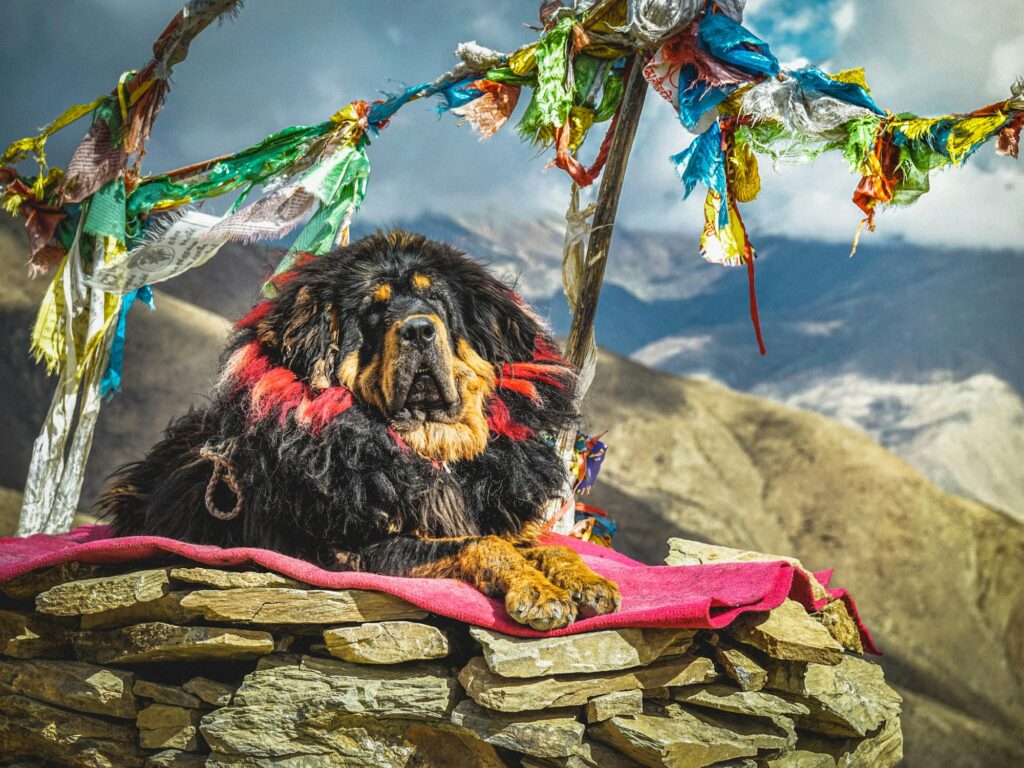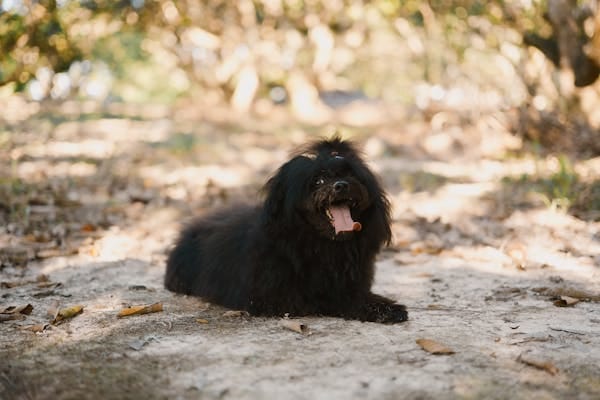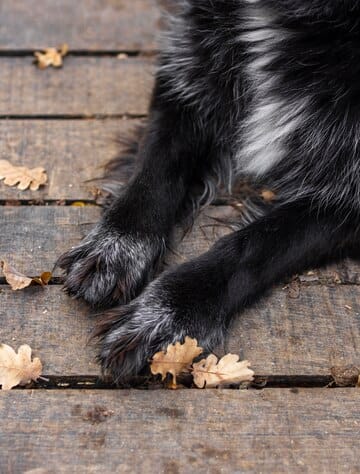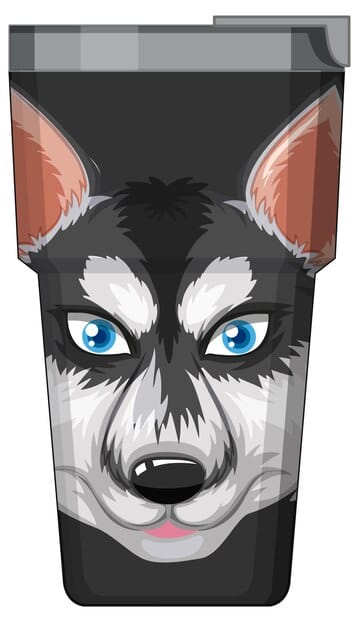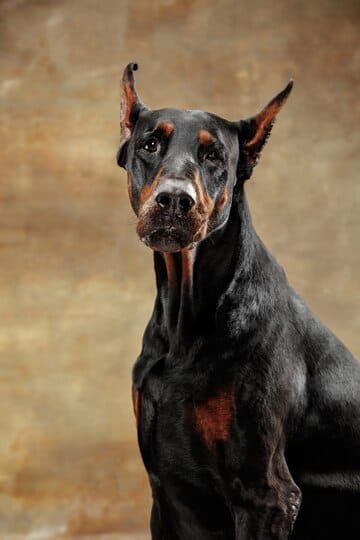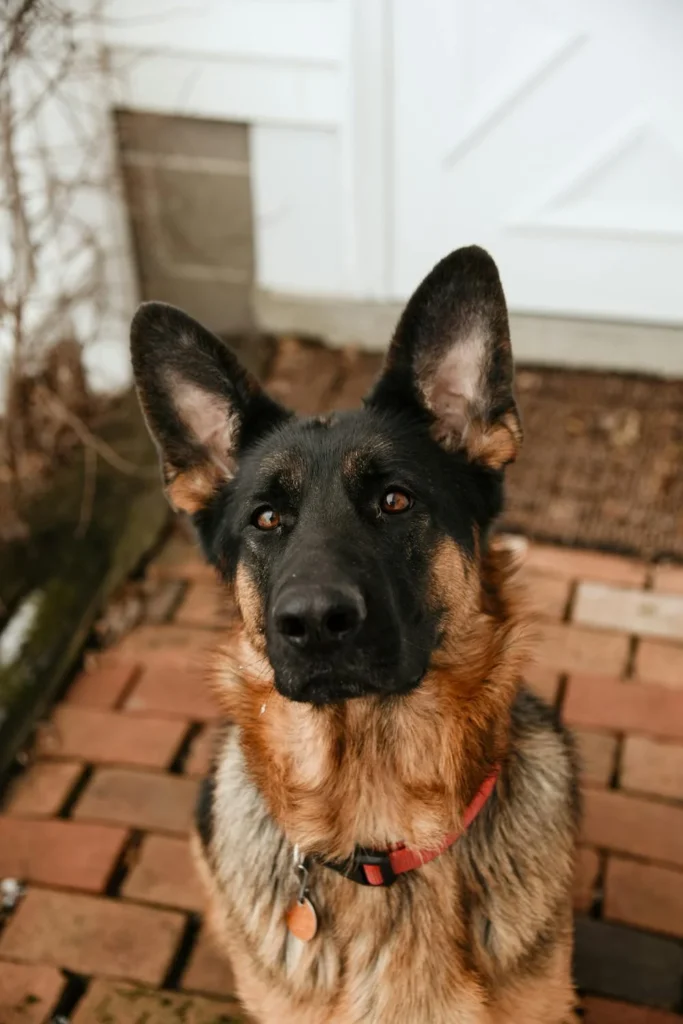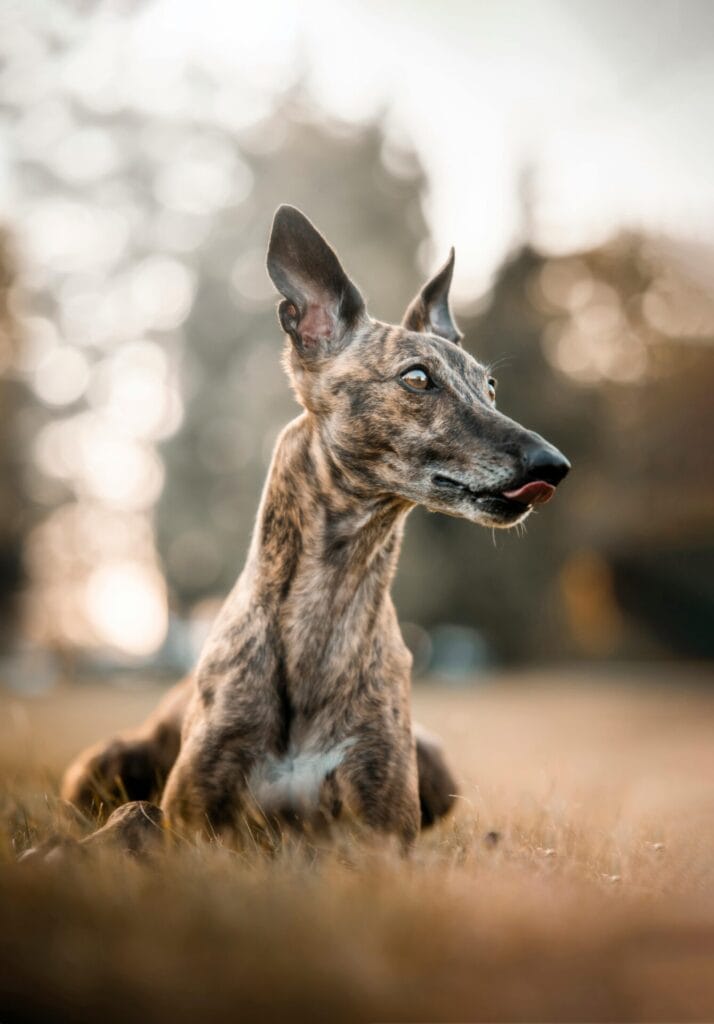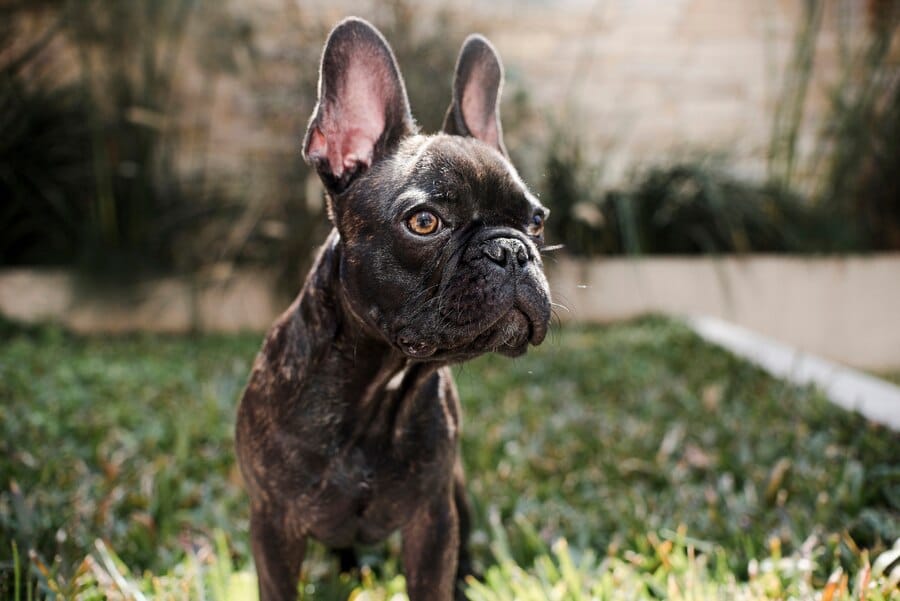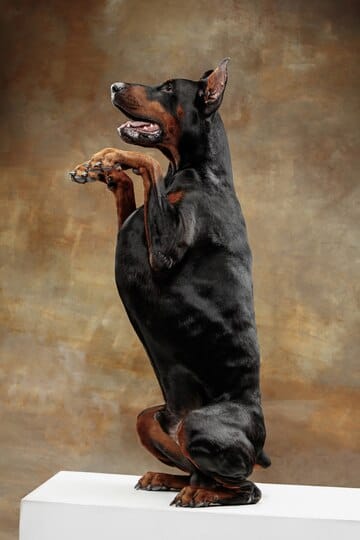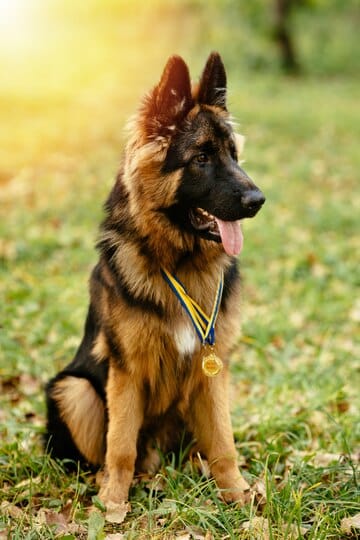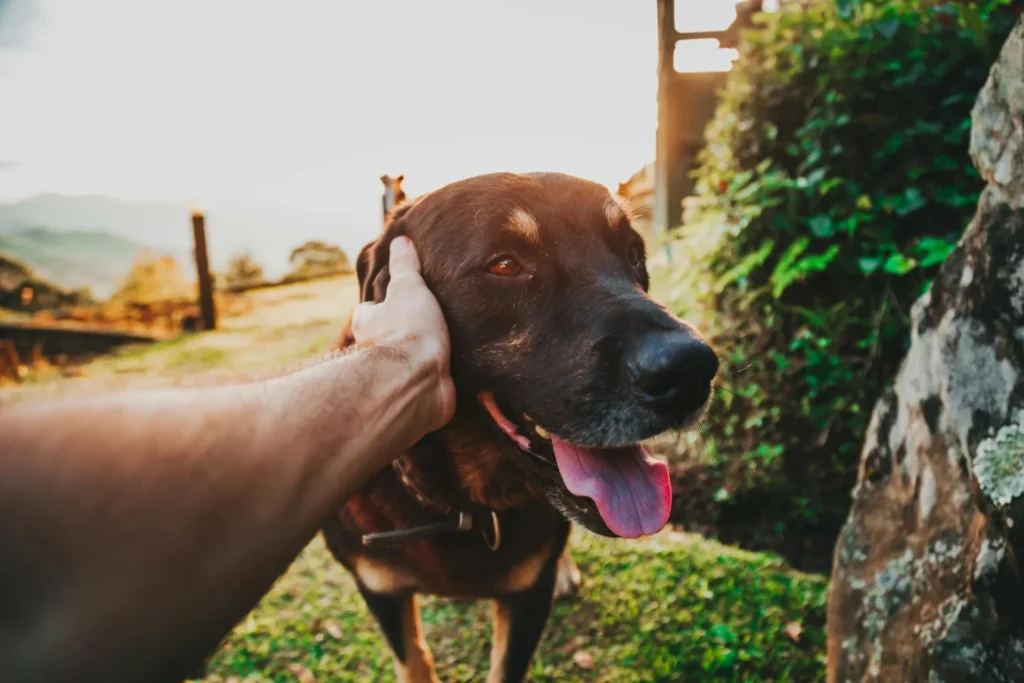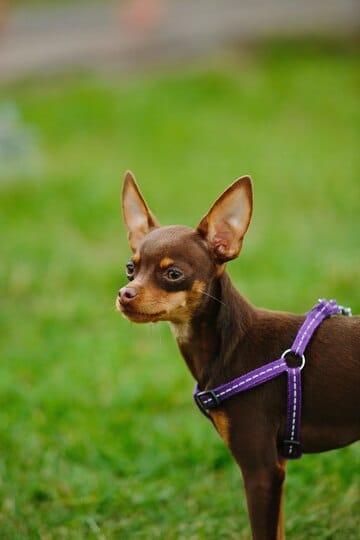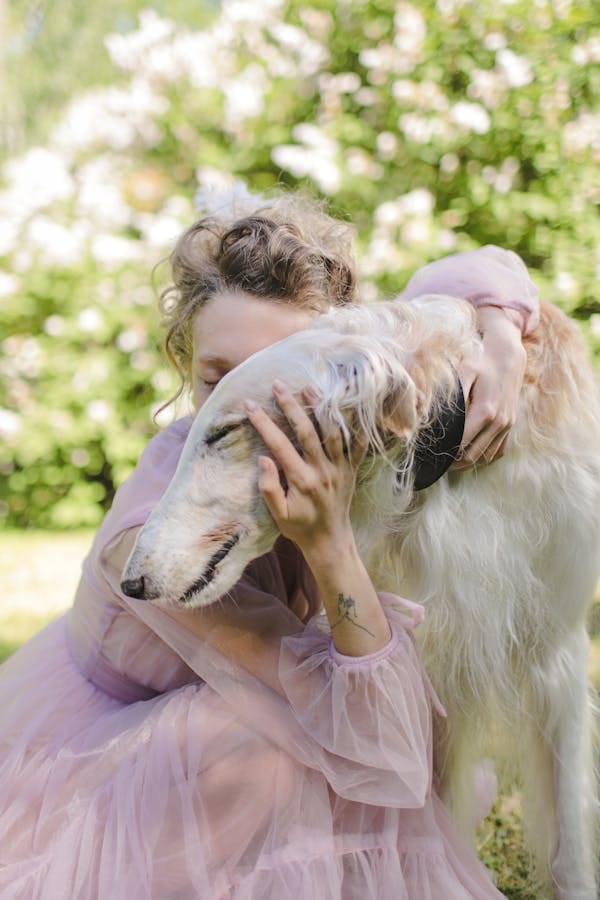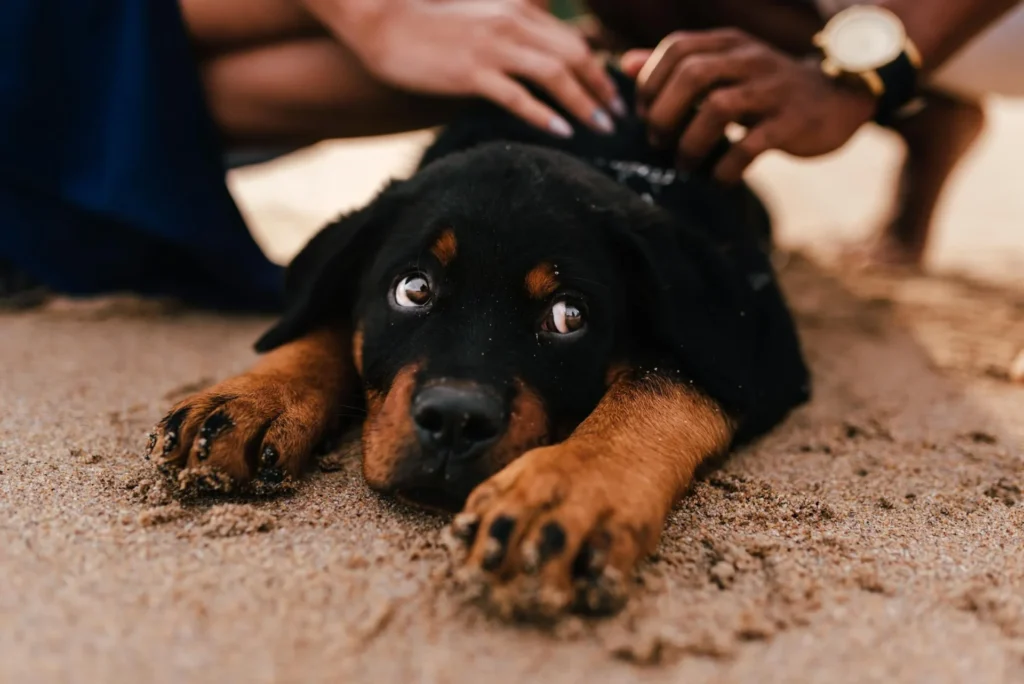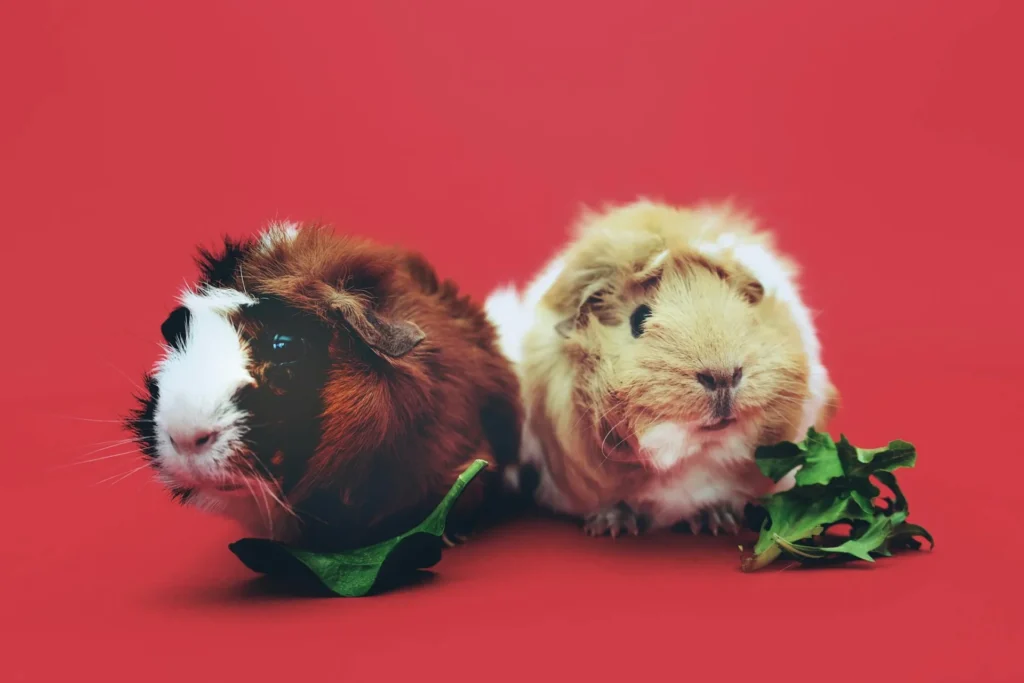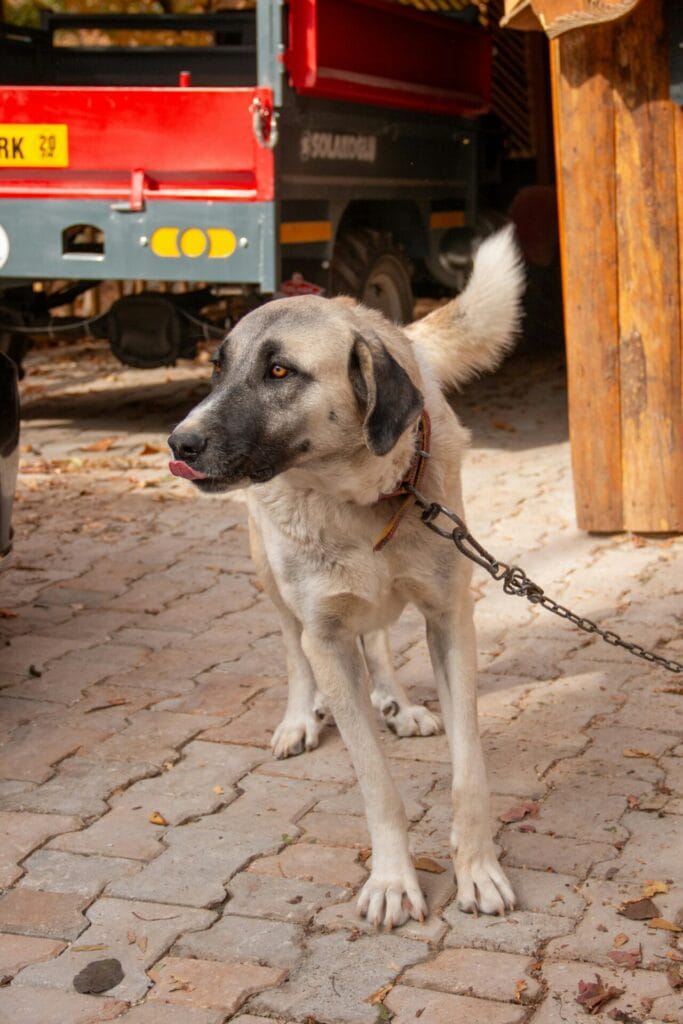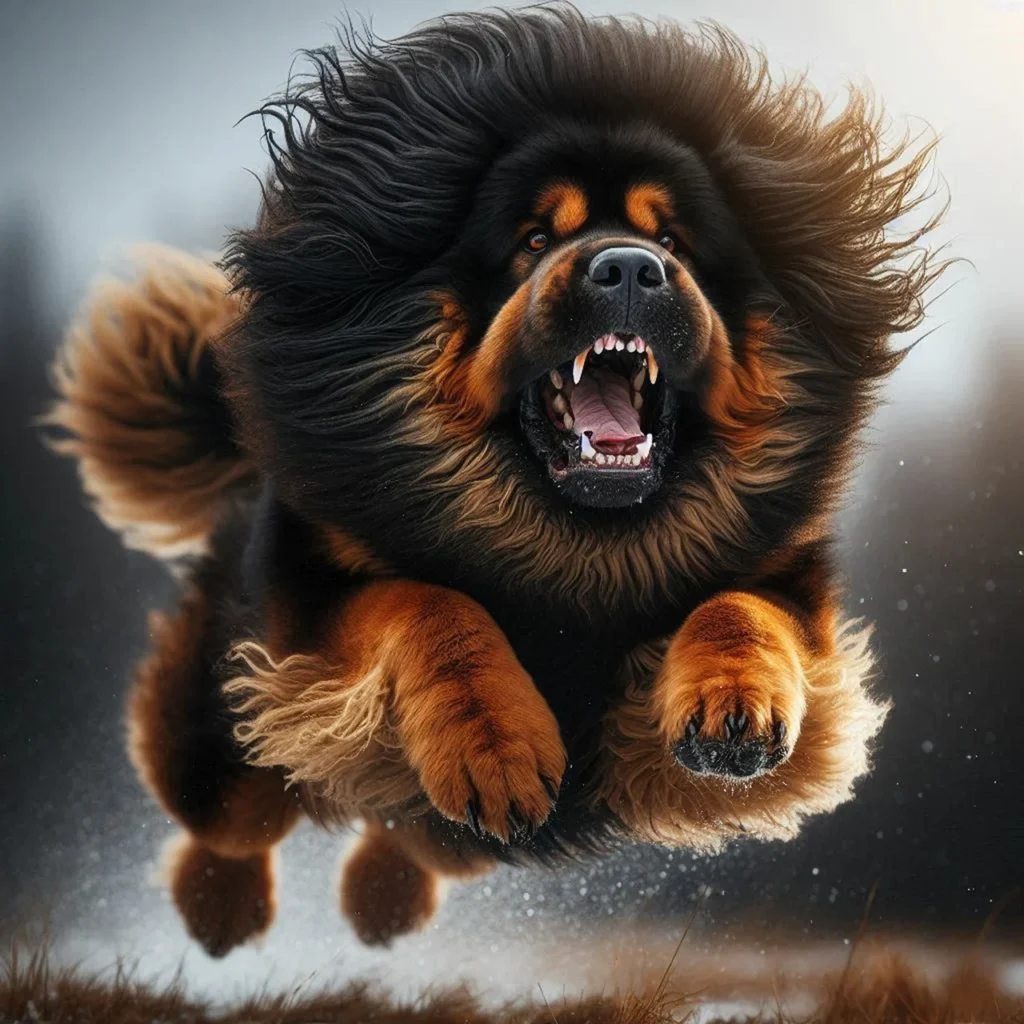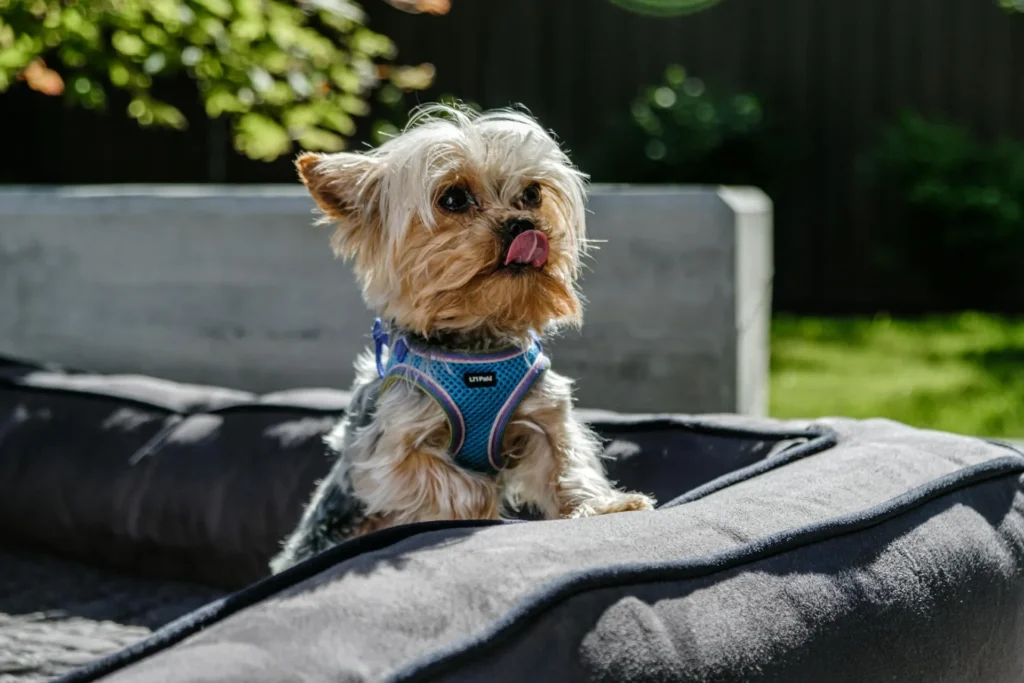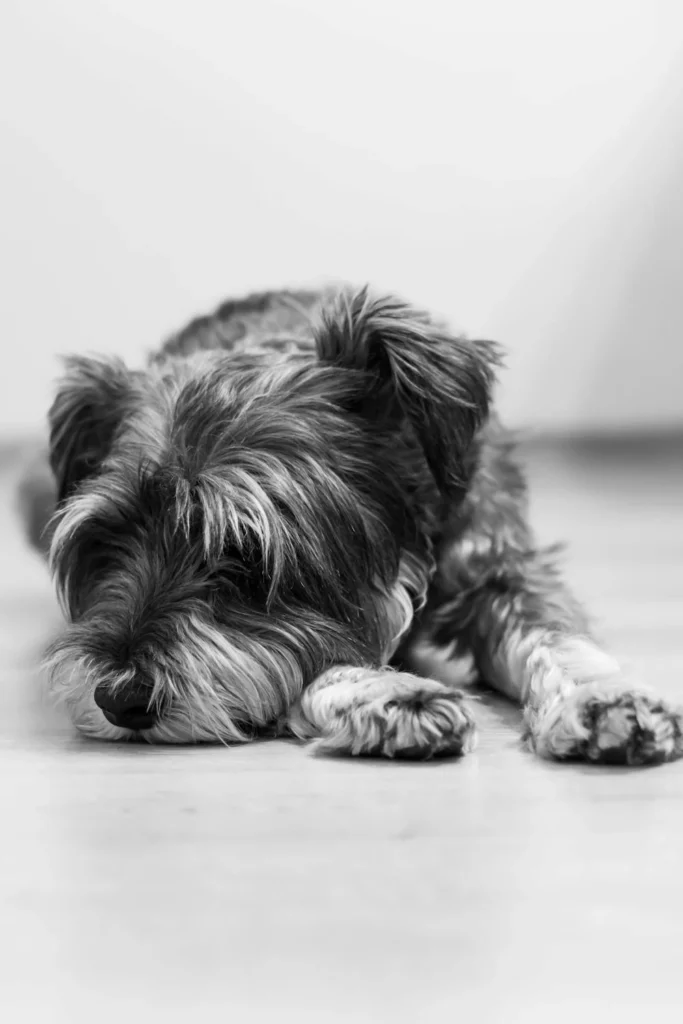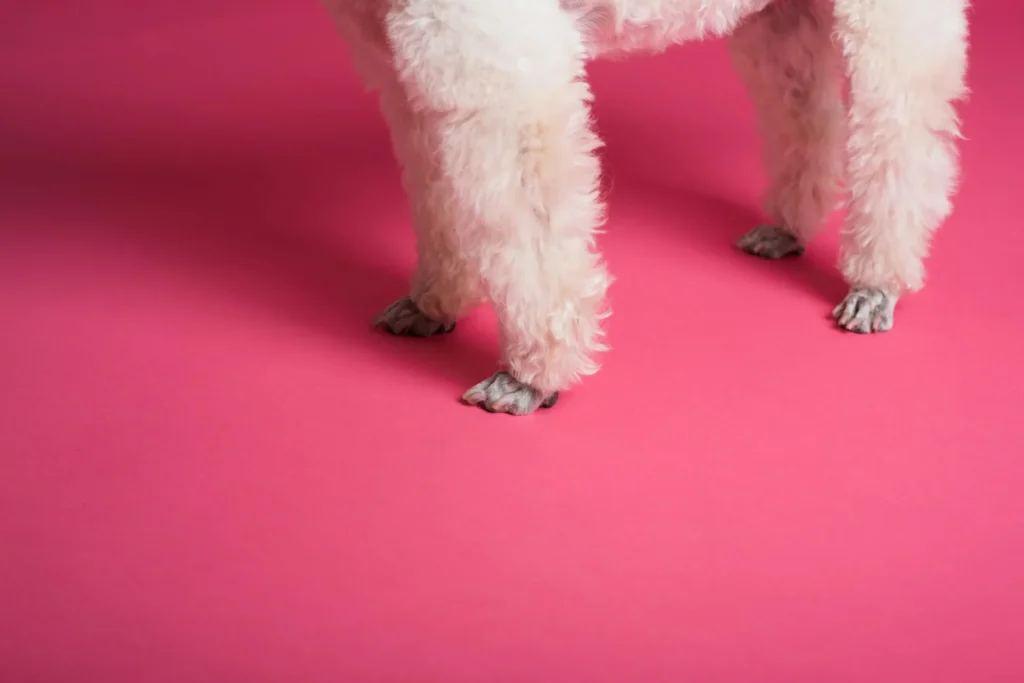- Introduction: Unraveling the Mystery of Wild Poodles 🔍
- The Origin Story: Where Do Poodles Really Come From? 🌍
- The Genetic Truth: Why Wild Poodles Don’t Exist 🧬
- The Physical Transformation: From Wild Canid to Poodle 🐺→🐩
- Behavioral Distinctions: Why Poodles Wouldn’t Survive in the Wild 🌲
- Could Poodles Return to the Wild? The Feral Dog Question 🏙️
- Poodle Relatives in the Wild: The Closest Natural Comparisons 🌏
- The Working Heritage: What Poodles Were Bred to Do 🦆
- Poodle Myths and Misconceptions: Separating Fact from Fiction 🔎
- Similar Breeds: Dogs That Look Like They Could Be “Wild Poodles” 🐕
- Living with Poodles: How Their Non-Wild Nature Shapes Care Needs 🏠
- The Future of Poodles: Evolution in the Human Context 🔮
- Experiencing “Wild” Poodle Behavior: Natural Instincts in Domestic Dogs 🦮
- Poodles in Culture: How We Perceive These Domestic Icons 📚
- FAQs About Wild Poodles 💭
- Conclusion: Understanding Poodles in the Context of Domestication 🌟
Introduction: Unraveling the Mystery of Wild Poodles 🔍
Have you ever watched your poodle prance around your living room and wondered where this elegant, curly-haired companion would be if not in your home? Perhaps running free in some distant forest with a pack of wild poodles? It’s a fascinating thought that leads many poodle owners and dog enthusiasts to ask: are there wild poodles?
The answer might surprise you. Despite their popularity as one of the world’s most beloved dog breeds, wild poodles don’t exist in nature today. But don’t click away just yet! The story behind this fact is a fascinating journey through history, biology, and human ingenuity that reveals much about our relationship with canines.
In this comprehensive guide, we’ll explore everything you need to know about poodles and their wild (or not-so-wild) origins. From their true ancestry to their development as a breed, we’ll separate fact from fiction and uncover the real story behind these intelligent, athletic dogs. Whether you’re a poodle parent, considering adding one to your family, or simply curious about canine evolution, this article will provide you with expert insights and entertaining facts about these remarkable animals.
The Origin Story: Where Do Poodles Really Come From? 🌍
The Domestication Journey: From Wolf to Dog
To understand why there are no wild poodles, we need to start at the beginning of the dog domestication story. All domestic dogs (Canis familiaris) evolved from wolves (Canis lupus) through a domestication process that began thousands of years ago.
Archaeological evidence suggests that dogs were the first animals domesticated by humans, with the earliest confirmed dog remains dating back about 14,000 years. However, genetic studies indicate that the wolf-to-dog transformation may have begun much earlier—possibly 20,000 to 40,000 years ago.
This domestication wasn’t a single event but a long, complex process that occurred across different regions and time periods. As humans and wolves began living in proximity, wolves that were less fearful of humans had better access to food scraps and other resources. Over generations, these wolves became more docile and physically different from their wild ancestors.
From Working Dog to Fancy Breed
The poodle as we know it today is the result of centuries of selective breeding. Unlike natural species that evolved to fill ecological niches, poodles were developed by humans for specific purposes. This human-guided evolution explains why you won’t find poodles running wild in forests or plains—they never existed there in the first place.
The earliest ancestors of poodles were likely water dogs used for retrieving game from lakes and rivers. Historical records and artistic depictions suggest that poodle-like dogs existed in various parts of Europe at least 400-500 years ago, with some evidence pointing to even earlier origins.
Country of Origin Debate
The exact origins of the poodle breed remain somewhat contested:
- France Connection: France is often associated with poodles, particularly the Standard Poodle, which is the country’s national dog. The name “poodle” itself likely comes from the German word “Pudel,” meaning “to splash in water,” reflecting the breed’s water-retrieving history.
- German Heritage: Many historians believe poodles were developed primarily in Germany as “Pudelhunds” or “Caniche” (French for “duck dog”), where they were used as water retrievers.
- Other European Influences: Some evidence suggests that poodle development was also influenced by dogs from the Iberian Peninsula and possibly even North Africa.
What’s clear is that by the 18th century, poodles had become established as distinct dogs throughout several European countries, and they began to transition from working water dogs to companions of the nobility and performers in circuses and shows.
The Genetic Truth: Why Wild Poodles Don’t Exist 🧬
Artificial Selection vs. Natural Selection
To truly understand why there are no wild poodles, it’s important to grasp the difference between natural and artificial selection:
- Natural Selection: The process by which organisms that are better adapted to their environment tend to survive and produce more offspring. This is how wild species evolve.
- Artificial Selection: The process by which humans breed plants and animals for desired traits. This is how domestic breeds develop.
Poodles are a product of artificial selection—humans deliberately chose dogs with certain characteristics (water-resistant curly coats, swimming ability, intelligence, etc.) and bred them together. Over many generations, this created dogs that look and behave very differently from their wolf ancestors.
The Genomic Evidence
Modern genetic research has given us fascinating insights into dog evolution. A 2017 study published in Nature Communications analyzed the genomes of 1,346 dogs representing 161 breeds. The findings confirmed that modern dog breeds, including poodles, are recent creations—most emerged in the last 200 years through intensive breeding programs.
This genomic evidence shows that poodles, like other purebred dogs, have a relatively narrow genetic base compared to natural species. Their development was guided by human aesthetic preferences and functional needs rather than survival in the wild.
The Closest Wild Relatives
While there are no wild poodles, we can identify their closest wild relatives:
- Gray Wolves (Canis lupus): As the ancestors of all dogs, wolves share the basic canine blueprint with poodles.
- Golden Jackals (Canis aureus) and Coyotes (Canis latrans): These wild canids are more distant relatives but still share many genetic similarities with domestic dogs.
Some studies suggest that certain ancient dog breeds like the Basenji or New Guinea Singing Dog have retained more “wild” genetic characteristics than highly developed breeds like poodles, which have undergone more extensive modification through selective breeding.
The Physical Transformation: From Wild Canid to Poodle 🐺→🐩
Key Physical Adaptations
The transformation from wolf to poodle involved dramatic changes in physical appearance and biological functions:
| Feature | Wild Wolf | Modern Poodle | Purpose of Change |
|---|---|---|---|
| Coat | Straight, dense double coat | Curly, continuously growing single coat | Water resistance, reduced shedding |
| Size | 70-90 lbs typically | Varies by variety (45-70 lbs Standard, 15-17 lbs Miniature, under 10 lbs Toy) | Adaptability for different working/companion roles |
| Skull Shape | Elongated muzzle, large teeth | Refined muzzle, proportional head | Aesthetic preferences, reduced aggression |
| Ears | Erect, triangular | Long, floppy, feathered | Possible byproduct of selecting for docility |
| Tail | Straight, bushy | Docked (traditionally), natural tail carried high | Hunting function, later aesthetics |
| Digestion | Primarily carnivorous | Adapted to more omnivorous diet | Adaptation to human food scraps over thousands of years |
The Signature Poodle Coat
Perhaps the most distinctive feature of poodles is their curly, continuously growing coat. This coat type is a result of specific genetic mutations that don’t exist in wild canids. The poodle’s coat served practical purposes initially—it protected vital areas while the dog worked in cold water, while the clipped portions reduced drag while swimming.
The traditional “poodle clip” with pompoms on the joints and tail wasn’t originally decorative but functional for hunting dogs working in cold water. The pompoms kept vital joints warm while the rest of the coat was trimmed to prevent it from weighing the dog down when swimming.
Size Diversification
Another fascinating aspect of poodle development is the creation of three distinct size varieties from the same genetic foundation:
- Standard Poodles: The original size, developed for water retrieval
- Miniature Poodles: Developed for smaller game hunting and truffle hunting
- Toy Poodles: Developed primarily as companions for nobility
This size diversification demonstrates how dramatically humans can reshape a species through selective breeding—something that would be highly unlikely to occur through natural selection alone.
Behavioral Distinctions: Why Poodles Wouldn’t Survive in the Wild 🌲
Wild Survival Skills vs. Domestic Adaptations
If poodles were suddenly released into the wild, they would face numerous challenges that their wild canid relatives are equipped to handle:
| Survival Requirement | Wolf Adaptation | Poodle Challenge |
|---|---|---|
| Hunting Ability | Coordinated pack hunting, can take down large prey | Limited prey drive in many lines, no pack hunting instincts |
| Coat Maintenance | Self-maintaining coat sheds seasonally | Requires regular grooming to prevent painful matting |
| Reproduction | Seasonal breeding, natural whelping | Many need human assistance for breeding and whelping |
| Temperature Regulation | Adapted for outdoor survival in extreme climates | Vulnerable to temperature extremes without human care |
| Social Structure | Complex pack hierarchy with natural development | Dependent on humans for social cues and structure |
The Intelligence Factor
Poodles are consistently ranked among the most intelligent dog breeds. According to canine intelligence expert Dr. Stanley Coren, they rank second only to Border Collies in working intelligence (the ability to learn commands). This intelligence, however, has been shaped for cooperation with humans rather than independent survival.
In the wild, problem-solving takes different forms. Wolves must strategize about hunting, territory defense, and pack dynamics. Poodles, in contrast, have been selectively bred to solve problems in human contexts and to be responsive to human cues.
A fascinating 2017 study published in the journal Scientific Reports found that when faced with insoluble problems, wolves tend to persist longer in trying to solve them independently, while dogs more quickly look to humans for help—a behavior that would be disadvantageous in a truly wild setting.
Dependency on Humans
Perhaps the most significant behavioral change from wolf to poodle is the development of what scientists call “hypersociability” toward humans. A 2017 study in Science Advances identified genetic changes in domestic dogs that parallel those seen in Williams-Beuren syndrome in humans—a condition characterized by extreme sociability.
These genetic changes help explain why poodles and other domestic dogs are so attuned to human social cues and so motivated to seek human attention—traits that would be maladaptive in a wild setting but perfect for a human companion.
Could Poodles Return to the Wild? The Feral Dog Question 🏙️
Feral Dogs vs. Wild Dogs
While there are no wild poodles, there are feral dogs around the world. It’s important to understand the distinction:
- Wild animals: Species that have never been domesticated and have evolved through natural selection.
- Feral animals: Domesticated animals that have returned to a wild state.
Feral dog populations exist on every continent except Antarctica. These are domestic dogs that have either been abandoned or have escaped from human care and now live independently of direct human control.
Poodles in Feral Populations
Interestingly, despite the millions of poodles kept as pets worldwide, purebred poodles rarely establish themselves in feral dog populations. When researchers study feral dog communities, they typically find a predominance of mixed-breed dogs with physical characteristics closer to the “natural” dog phenotype—medium-sized animals with straight or slightly wavy coats, erect or semi-erect ears, and curled tails.
The reasons for this include:
- Survival Disadvantage: The poodle’s high-maintenance coat becomes a serious survival disadvantage without human care. It can become severely matted, leading to skin infections and mobility impairment.
- Reproductive Challenges: Many purebred poodles, particularly toy varieties, have difficulty reproducing without human assistance due to selective breeding for extreme traits.
- Genetic Dilution: Any purebred poodle joining a feral population would likely breed with other dogs, and their distinctive traits would be diluted within a few generations.
A 2014 study published in the Proceedings of the National Academy of Sciences found that when domestic dogs go feral, natural selection begins to favor a return to wolf-like traits rather than the maintenance of breed-specific characteristics.
The Russian Fox Experiment: A Clue About Reversing Domestication
The famous Russian Farm-Fox Experiment, started in 1959 by Soviet geneticist Dmitry Belyaev, provides insights into how quickly domestication traits can appear—and potentially disappear. Belyaev selectively bred wild silver foxes solely for tameness. Within just a few generations, the foxes began developing “domestic” traits like floppy ears, curled tails, and piebald coloration.
This experiment suggests that if poodles were to establish viable feral populations, natural selection might relatively quickly begin selecting against their more extreme “domestic” features, potentially leading to a more wolf-like appearance over many generations.
Poodle Relatives in the Wild: The Closest Natural Comparisons 🌏
Water Dogs Around the World
While poodles themselves don’t exist in the wild, there are wild canids with some similar adaptations. The most relevant comparisons would be to other water-adapted hunters:
- Fishing Wolves: Some wolf populations, particularly along coastal regions, have developed specialized techniques for fishing and foraging along shorelines.
- African Wild Dogs (Lycaon pictus): Though not closely related to poodles genetically, these wild canids demonstrate the high intelligence and hunting prowess that were valued in the development of poodles.
Other Domestic Breeds with Wild Relatives
Some dog breeds do have much closer living wild relatives:
| Domestic Breed | Wild Relative | Relationship |
|---|---|---|
| Dingo | Australian Dingo | Feral dogs that have lived independently for thousands of years |
| Basenji | African Village Dogs | Ancient landrace with minimal human selection |
| New Guinea Singing Dog | New Guinea Highland Wild Dog | Recently rediscovered wild population |
| Alaskan Malamute | Gray Wolf | Maintained wolf-like appearance and some behaviors |
These examples highlight how unusual the poodle’s highly modified form is compared to dogs that retain more of their wild heritage.
The Working Heritage: What Poodles Were Bred to Do 🦆
Original Working Roles
Understanding the poodle’s working heritage helps explain why they look and behave as they do:
- Water Retrievers: The original standard poodles were developed as retrieving dogs for waterfowl hunting. Their water-resistant coats, swimming ability, and retrieval instincts were perfectly suited for this role.
- Truffle Hunters: Particularly in France and Germany, poodles were valued for their keen sense of smell and trainability in finding valuable truffles.
- Cart Pullers: In some European regions, smaller poodles were used to pull small carts.
- Military Dogs: Standard poodles served as military dogs in various European armies, particularly during World Wars I and II.
- Circus and Performance Dogs: Poodles’ high intelligence and trainability made them stars of circus performances dating back hundreds of years.
The Functional Origin of Poodle Clips
The distinctive poodle clip that many associate with the breed wasn’t originally decorative:
- Pompoms at joints: Protected vital areas from cold water while hunting
- Shaved legs and body: Reduced drag while swimming
- Mane around the chest: Protected vital organs from cold
- Topknot: Originally helped hunters spot their dogs in the water
These practical origins transformed over time into the elaborate show clips we see today, but they reflect the breed’s working heritage as water retrievers.
Modern Working Poodles
Though rarely used for their original hunting purposes today, poodles continue to excel in various working roles:
- Service Dogs: Their intelligence makes them excellent assistance dogs
- Therapy Dogs: Their gentle nature and hypoallergenic coats are ideal for hospital visits
- Detection Dogs: Their keen sense of smell makes them good at scent work
- Competition Dogs: They excel in obedience, agility, and other dog sports
This working heritage explains much about the poodle’s temperament and needs. Despite their fancy appearance, they are active, working dogs that thrive with mental and physical challenges.
Poodle Myths and Misconceptions: Separating Fact from Fiction 🔎
Common Misconceptions About Poodles
Many misconceptions surround poodles, particularly regarding their origins and nature:
| Myth | Reality |
|---|---|
| Poodles are French dogs | While associated with France, they likely originated in Germany or elsewhere in Central Europe |
| Poodles are prissy, high-strung dogs | Well-bred poodles are typically confident, gentle, and athletic |
| Poodle haircuts are purely decorative | The traditional clips had practical hunting origins |
| Poodles don’t shed | They do shed, but hair tends to tangle in the coat rather than fall out |
| There are wild poodles in remote areas | No wild poodle populations exist; all poodles are domesticated |
The “French Poodle” Misnomer
Perhaps the most persistent myth is that poodles are fundamentally “French dogs.” While France did embrace the poodle and develop it further (particularly the Toy Poodle as a companion for nobility), historical evidence suggests that the breed’s working origins likely lie in Germany or elsewhere in Central Europe.
The confusion stems partly from the fact that the poodle became extremely popular in France during the 18th century and was eventually named the national dog of France.
The “Sissy Dog” Stereotype
Another unfortunate misconception is that poodles are somehow “sissy” or overly prissy dogs. This stereotype likely emerged from their popular portrayal in show clips and as companions to the wealthy.
In reality, standard poodles were developed as rugged working dogs capable of retrieving game from icy water. They are athletic, intelligent, and versatile dogs with a strong working drive. Many standard poodle owners today participate in outdoor activities like hunting, hiking, and water sports with their dogs.
Similar Breeds: Dogs That Look Like They Could Be “Wild Poodles” 🐕
Water Dog Breeds Related to Poodles
Several modern breeds share ancestry with poodles as water retrievers:
- Portuguese Water Dog: Like poodles, these dogs have curly, water-resistant coats and were used for water work.
- Spanish Water Dog: Another curly-coated water working breed with similar functionality to the early poodle.
- Irish Water Spaniel: The tallest of the spaniels, with a curly coat and working history similar to poodles.
- Barbet: A French water dog believed to be closely related to the poodle’s ancestors.
- Lagotto Romagnolo: An Italian breed originally used as a water retriever before specializing in truffle hunting.
Comparison of Water Dog Characteristics
| Breed | Coat Type | Size | Original Purpose | Notable Traits |
|---|---|---|---|---|
| Standard Poodle | Curly, continuously growing | 40-70 lbs | Water retrieval, hunting | Highly intelligent, versatile |
| Portuguese Water Dog | Wavy or curly, water-resistant | 35-60 lbs | Fishing assistance, message carrying | Webbed feet, strong swimming ability |
| Spanish Water Dog | Curly, corded when ungroomed | 30-50 lbs | Herding, water retrieval | Single-coat system, versatile working dog |
| Irish Water Spaniel | Dense, liver-colored curls | 45-65 lbs | Water retrieval | Distinctive “rat tail,” oldest spaniel breed |
| Barbet | Woolly, curly, water-resistant | 35-65 lbs | Water retrieval | Ancient French breed, possible poodle ancestor |
| Lagotto Romagnolo | Woolly, curly | 25-35 lbs | Water retrieval, truffle hunting | Excellent scenting ability |
These breeds demonstrate how similar traits evolved in different regions for similar working purposes. They represent the closest thing to what “wild poodles” might look like if they existed—dogs adapted for water work with curly, water-resistant coats.
Living with Poodles: How Their Non-Wild Nature Shapes Care Needs 🏠
Special Care Requirements Due to Domestication
The poodle’s highly modified form creates specific care needs that highlight how far they are from any “wild” state:
- Coat Care: Without regular grooming (every 4-6 weeks), a poodle’s continuously growing coat will become severely matted, leading to skin problems and pain.
- Mental Stimulation: Bred for intelligence and human cooperation, poodles need substantial mental engagement to prevent boredom and behavioral issues.
- Social Needs: Having been selected for human companionship, poodles typically don’t thrive when left alone for long periods.
- Exercise Requirements: Despite their elegant appearance, poodles need regular exercise to maintain physical and mental health.
Health Considerations Related to Selective Breeding
Selective breeding has created not only the poodle’s distinctive appearance but also certain health vulnerabilities not seen in wild canids:
| Health Concern | Prevalence | Relationship to Breeding |
|---|---|---|
| Hip Dysplasia | Moderate in Standards | Result of selecting for structure without natural selection pressures |
| Progressive Retinal Atrophy | Present in all varieties | Genetic disorder spread through narrow breeding pools |
| Sebaceous Adenitis | Higher in Standards | Autoimmune disorder possibly linked to immune system changes through breeding |
| Addison’s Disease | Higher than average | May relate to genetic bottlenecks in breed development |
| Bloat (Gastric Dilatation-Volvulus) | High risk in Standards | Related to chest structure selected for aesthetic reasons |
These health issues highlight how artificial selection can sometimes prioritize appearance over the robust health that natural selection would favor.
Environmental Impact: The Ecological Footprint of Poodle Ownership
While there are no wild poodles to impact natural ecosystems, domestic poodles—like all pet dogs—do have an environmental footprint:
- Food Consumption: A standard poodle can consume 250-300 pounds of meat products annually
- Waste Production: The average dog produces about 274 pounds of waste per year
- Resource Use: Grooming products, toys, and accessories require resources to produce
Research from the UCLA Institute of the Environment suggests that pet dogs account for about 25-30% of the environmental impact of animal protein consumption in the United States. This is another way in which domesticated dogs differ fundamentally from their wild ancestors, who would be integrated components of their ecosystems rather than additions to human resource consumption.
The Future of Poodles: Evolution in the Human Context 🔮
Modern Breeding Trends
The continued evolution of poodles today is being shaped by several factors:
- Health Testing: Responsible breeders increasingly use genetic testing to reduce inherited diseases.
- Sport and Performance: Growing interest in dog sports is shifting breeding priorities toward working ability and athleticism in some lines.
- Designer Dogs: Poodle crosses like Labradoodles and Goldendoodles represent a new direction in poodle genetics—creating deliberate hybrids for specific traits.
- Color Expansion: While traditionally limited to solid colors, some breeders are now selecting for patterns and colors not historically seen in poodles.
The Potential for Rewilding
Could poodles ever “return to the wild” through a process of rewilding? Most experts consider this extremely unlikely for several reasons:
- Time Scale: The changes needed to make poodles viable in the wild would take many generations of natural selection.
- Starting Population: There would need to be a sufficiently large population of feral poodles isolated enough to develop as a distinct population.
- Environmental Pressures: The environments where most feral dog populations exist don’t match the selective pressures that created wolves.
However, if a population of poodles were somehow isolated in the wild for hundreds or thousands of years, natural selection would likely favor a return to more wolf-like traits—larger size, straight coats, erect ears, and stronger predatory instincts.
Conservation Implications
While there are no wild poodles to conserve, the relationship between domestic dogs and wild canids has conservation implications:
- Genetic Introgression: In some regions, domestic dogs (including poodles) breeding with wolves can threaten the genetic integrity of wild wolf populations.
- Competition: Feral dog populations can compete with wild canids for resources.
- Disease Transmission: Domestic dogs can transmit diseases to wild canid populations.
These issues highlight the complex relationship between the dogs we’ve created through selective breeding and their wild relatives.
Experiencing “Wild” Poodle Behavior: Natural Instincts in Domestic Dogs 🦮
Glimpses of Wild Heritage
Despite their highly modified form, poodles occasionally display behaviors that hint at their wild canid heritage:
- Digging: Many poodles love to dig, a behavior shared with wolves who dig dens.
- Predatory Sequence: Some poodles display elements of the predatory sequence (orient, eye, stalk, chase, grab, kill, dissect, consume) when playing with toys.
- Scent Rolling: The behavior of rolling in strong-smelling substances (often unpleasant to humans) is shared with wolves and other wild canids.
- Resource Guarding: Some poodles may guard food or toys, a behavior that has roots in wild resource protection.
Tapping Into Natural Behaviors Through Activities
Many poodle owners find that their dogs are happiest when allowed to engage in activities that tap into their natural canine tendencies:
- Scent Work: Activities like tracking, nosework, and truffle hunting utilize the poodle’s excellent scenting ability.
- Water Retrieval: Swimming and water retrieval games connect with the poodle’s water dog heritage.
- Puzzle Solving: Food puzzles and problem-solving games engage the predatory problem-solving instincts.
- Coursing and Chasing: Lure coursing and chase games allow for expression of the chase instinct in a controlled setting.
These activities can provide valuable mental and physical stimulation while allowing expression of behaviors that would have been adaptive in the poodle’s ancestors.
Poodles in Culture: How We Perceive These Domestic Icons 📚
Poodles in Art and Literature
Poodles have featured prominently in human culture for centuries:
- Royal Portraits: Poodles appear in numerous royal portraits from the 16th-18th centuries, particularly in French and Spanish court paintings.
- Literature: Poodles feature in works ranging from Thomas Mann’s “Herr und Hund” to children’s classics like “Fancy Nancy.”
- Film and Television: From classic movies like “Bell, Book and Candle” to animated features like “Oliver and Company,” poodles often represent sophistication.
The Symbolic Poodle
The poodle has taken on symbolic meanings in different contexts:
- Luxury and Refinement: Often associated with wealth and sophistication
- Intelligence and Trainability: Used to represent smart, capable characters
- French Culture: Frequently used as a symbol of French elegance
- Artificiality: Sometimes used to represent something highly modified from its natural state
These cultural representations further reinforce the poodle’s status as a thoroughly domesticated animal, one whose identity is inseparable from its relationship with humans.
FAQs About Wild Poodles 💭
Common Questions and Expert Answers
Q: Have poodles ever existed in the wild?
A: No, poodles as a distinct breed have never existed in a wild state. They were developed through selective breeding from domestic dogs, which themselves evolved from gray wolves.
Q: If I released my poodle into the forest, would it survive?
A: Most pet poodles would not survive long if released into the wild. They lack the hunting skills, social structures, and physical adaptations needed for wild survival. Additionally, releasing a domestic dog into the wild is inhumane and often illegal.
Q: Are there feral poodles living independently of humans?
A: While there are feral dog populations worldwide, purebred poodles rarely establish themselves in these groups due to their high-maintenance coats and specialized breeding. Any poodles that joined feral groups would likely interbreed with other dogs within a few generations.
Q: What wild animal is most closely related to poodles?
A: Like all domestic dogs, the gray wolf (Canis lupus) is the poodle’s closest wild relative. However, thousands of years of domestication and centuries of selective breeding have created significant differences between wolves and poodles.
Q: Can poodles interbreed with wolves?
A: Technically yes, poodles can interbreed with wolves because all domestic dogs remain the same species as wolves (Canis lupus, with dogs being the subspecies Canis lupus familiaris). However, such crossbreeding is illegal in many jurisdictions and ethically problematic.
Q: Are standard poodles more “wild” than toy poodles?
A: Neither variety is “wild,” but standard poodles generally retain more of their original working abilities and sometimes display more natural behaviors. Toy poodles have been bred primarily as companions for a longer period.
Q: What’s the closest thing to a “wild poodle” that exists?
A: The closest comparisons would be other curly-coated water dog breeds that retain working abilities, like the Portuguese Water Dog or the Barbet. However, even these are fully domesticated breeds.
Conclusion: Understanding Poodles in the Context of Domestication 🌟
The question “are there wild poodles?” opens a fascinating window into the relationship between humans and dogs. While the answer is clearly “no,” exploring why reveals much about how domestication has transformed wolves into the diverse dogs we love today.
Poodles represent one of the most striking examples of how human selection can reshape a species. From their continuously growing curly coats to their exceptional intelligence and trainability, poodles embody traits that would never have evolved through natural selection alone.
Rather than seeing poodles as artificial or unnatural, we can appreciate them as living testaments to the ancient partnership between humans and dogs—a partnership that has created animals perfectly adapted not to life in the wild, but to life with us. Their very existence highlights how dramatically we have influenced the evolution of another species and how thoroughly intertwined our fates have become.
Whether you’re a poodle owner or simply interested in canine evolution, understanding the true origins of these remarkable dogs can deepen your appreciation for the complex, fascinating history we share with our domestic companions.
Further Reading
For those interested in learning more about canine evolution, domestication, and the development of modern dog breeds, the following resources provide excellent information:
- “The Genius of Dogs” by Brian Hare and Vanessa Woods
- “Dog Sense” by John Bradshaw
- “How the Dog Became the Dog” by Mark Derr
- “The Domestic Dog: Its Evolution, Behavior and Interactions with People” edited by James Serpell
- “The Poodle Handbook” by Linda Whitwam
This article was researched and written by dog behavior specialists and canine historians with expertise in poodle history and domestication. While we’ve aimed to provide comprehensive information, our understanding of canine evolution continues to develop as new research emerges.

